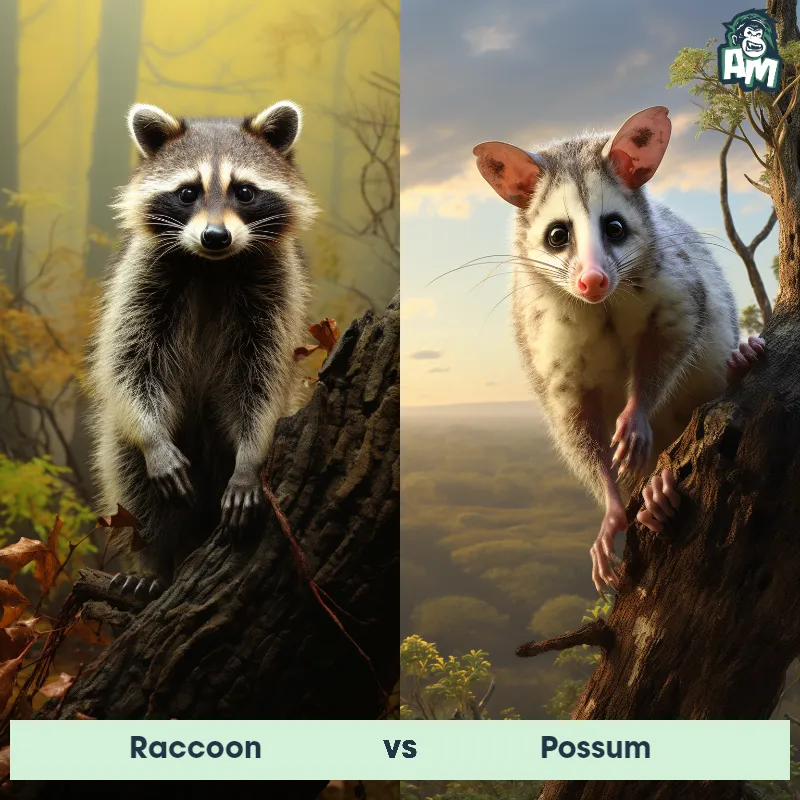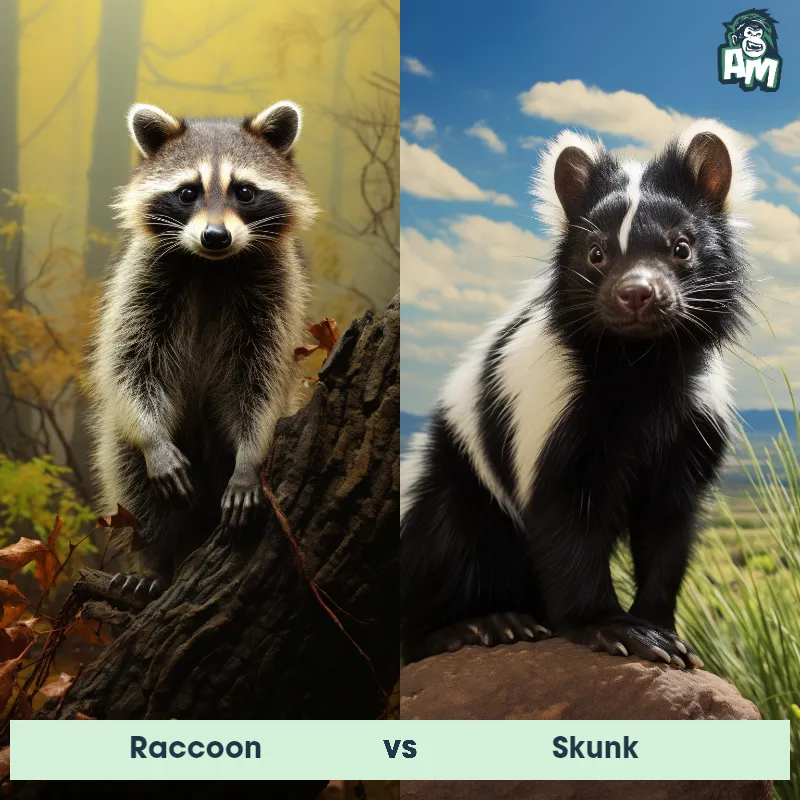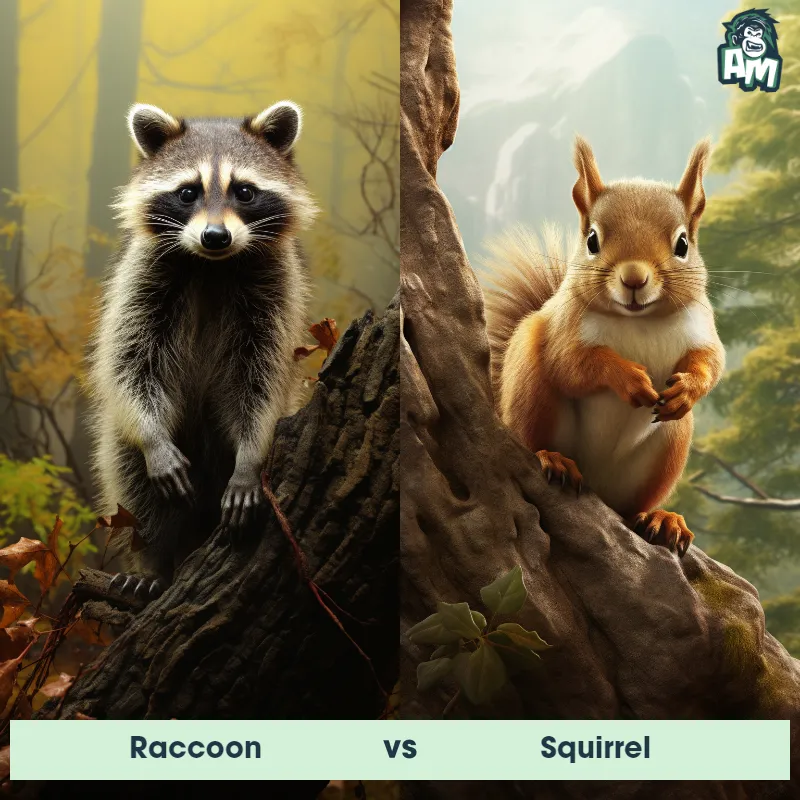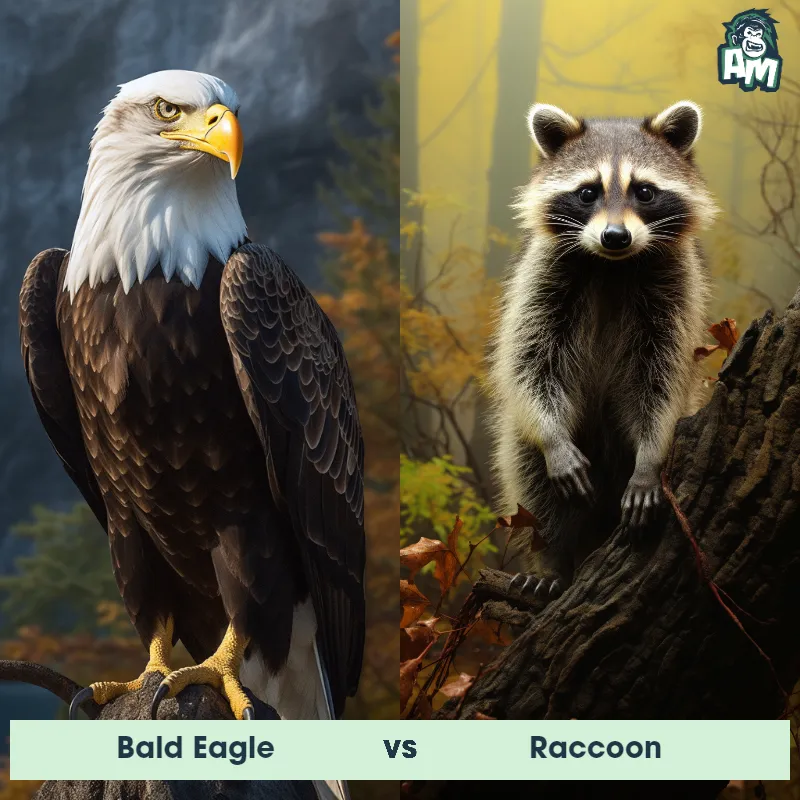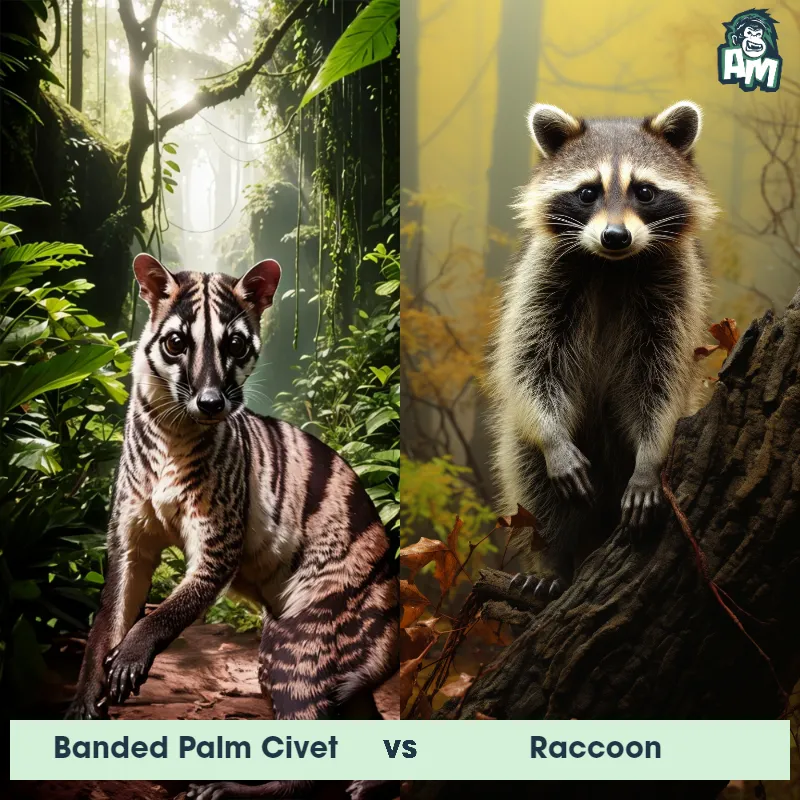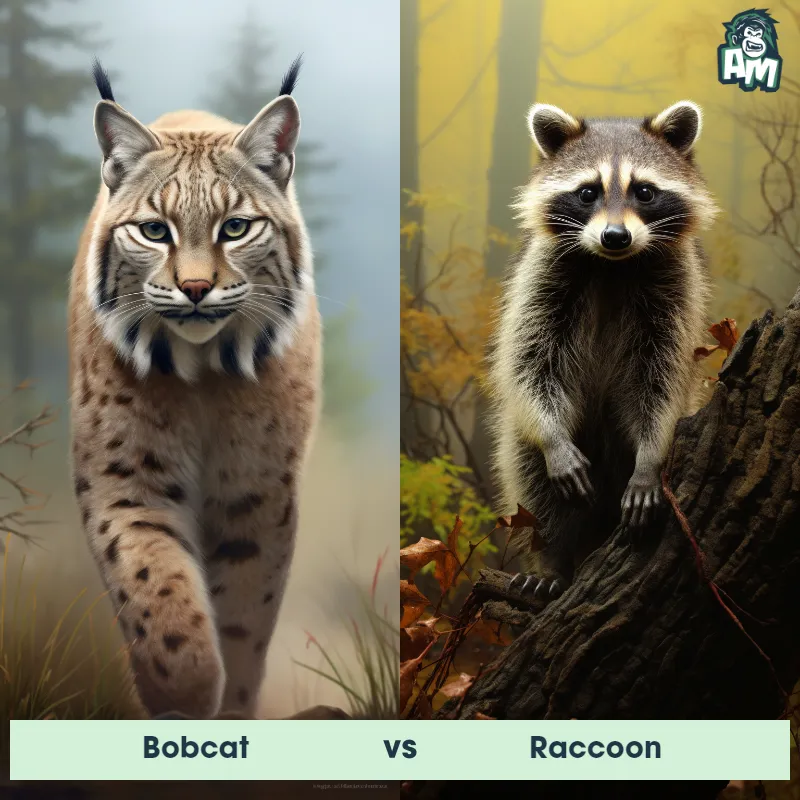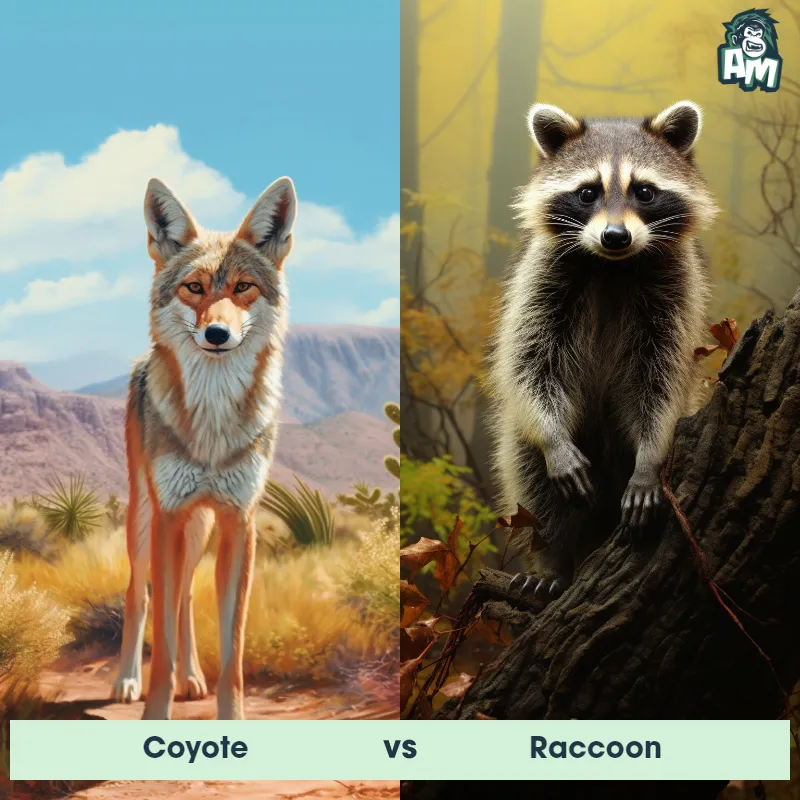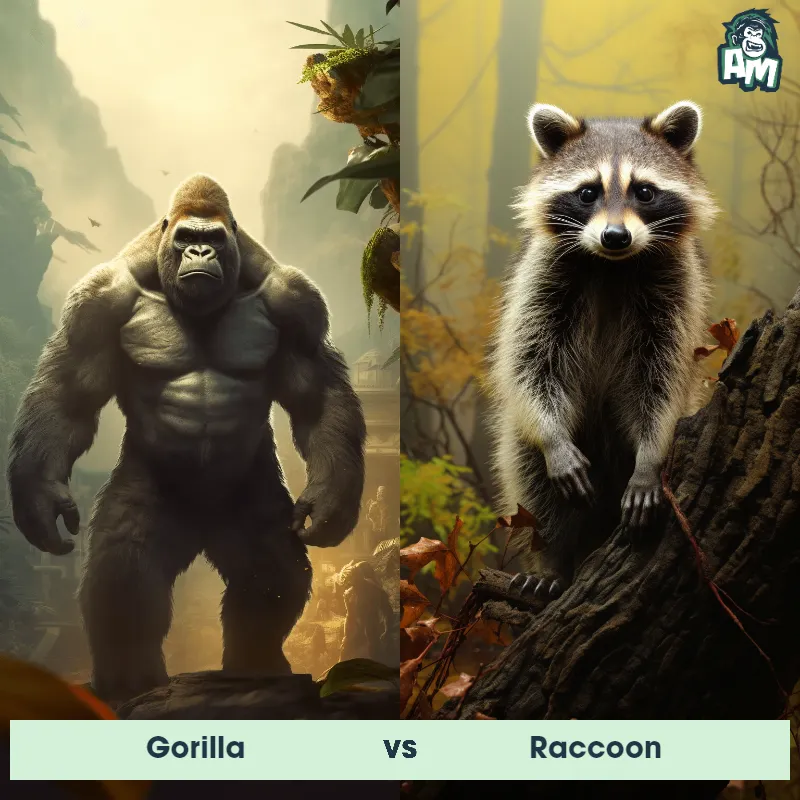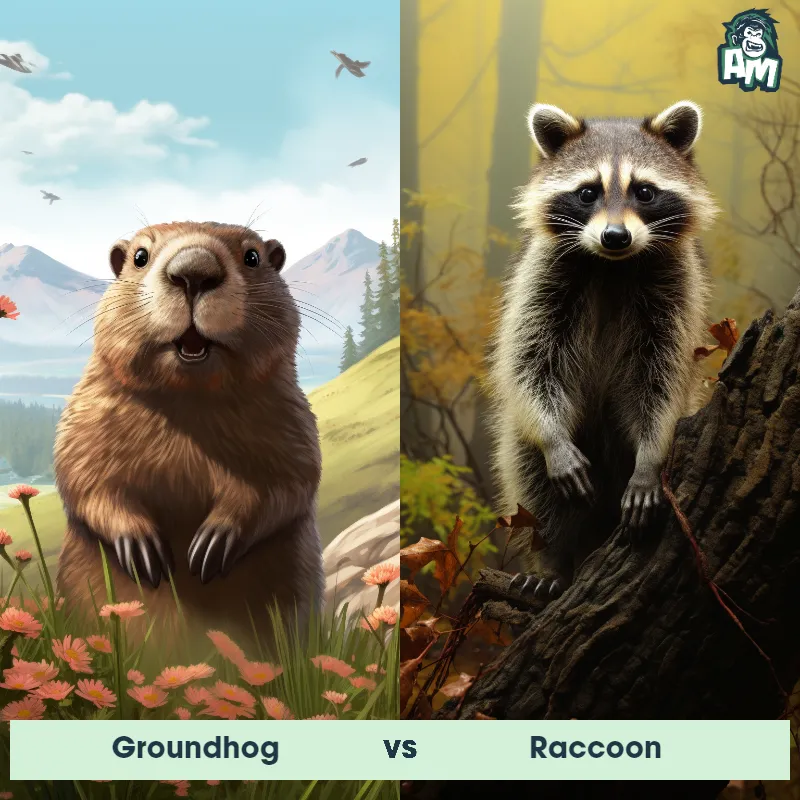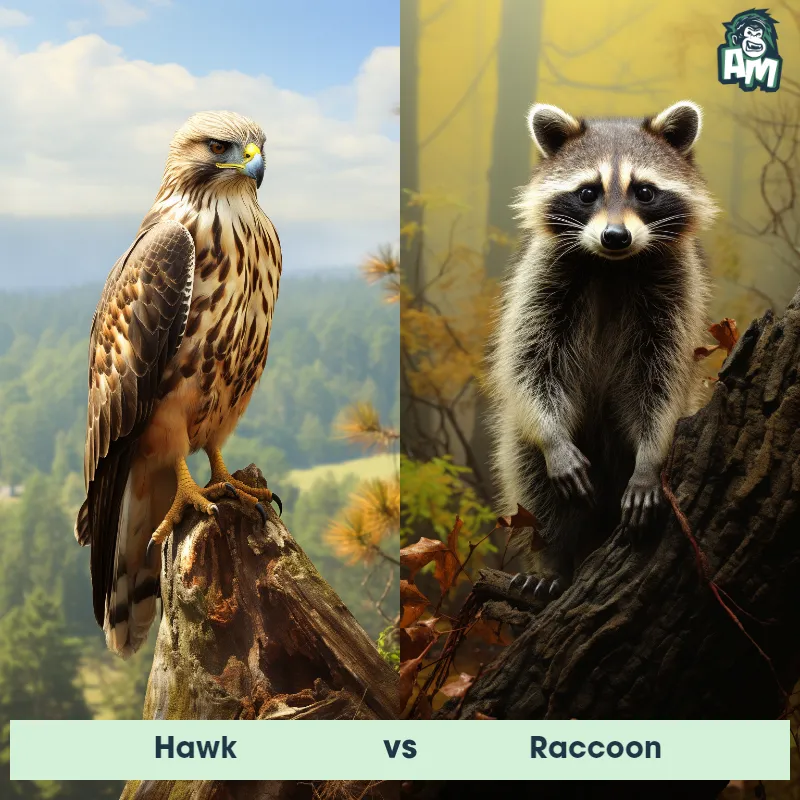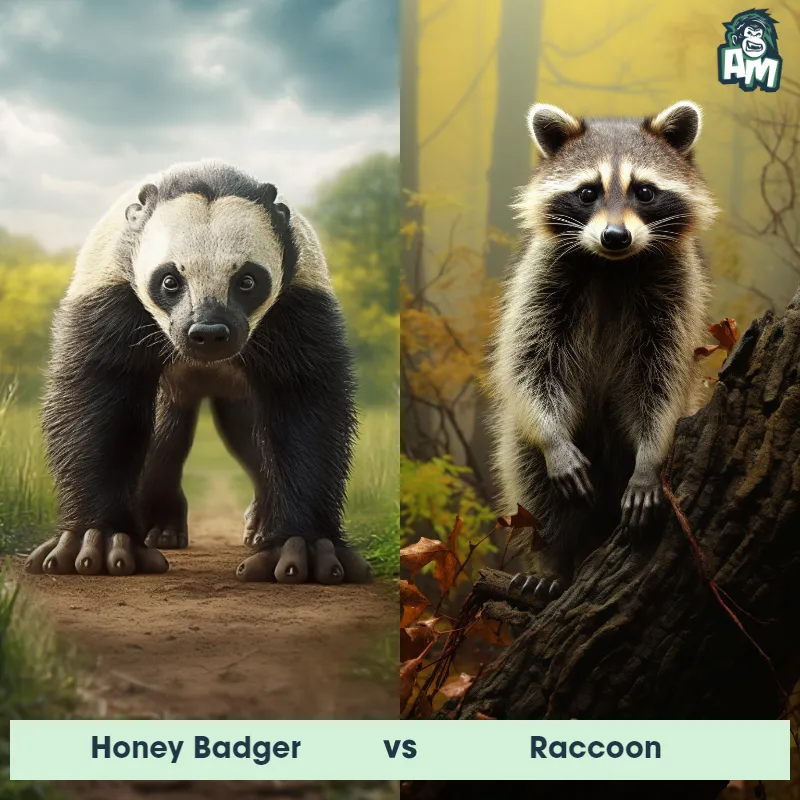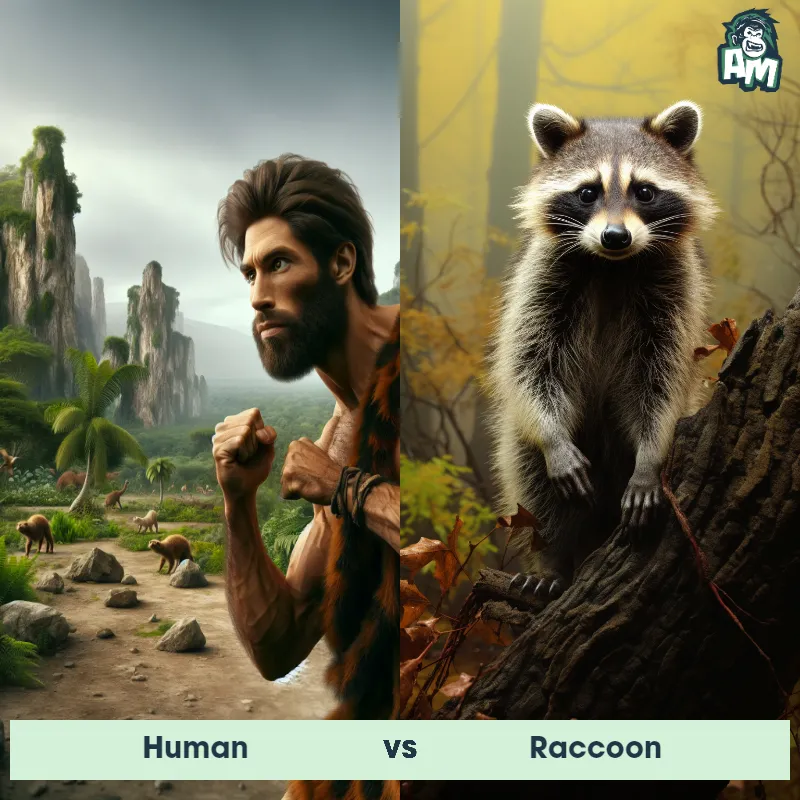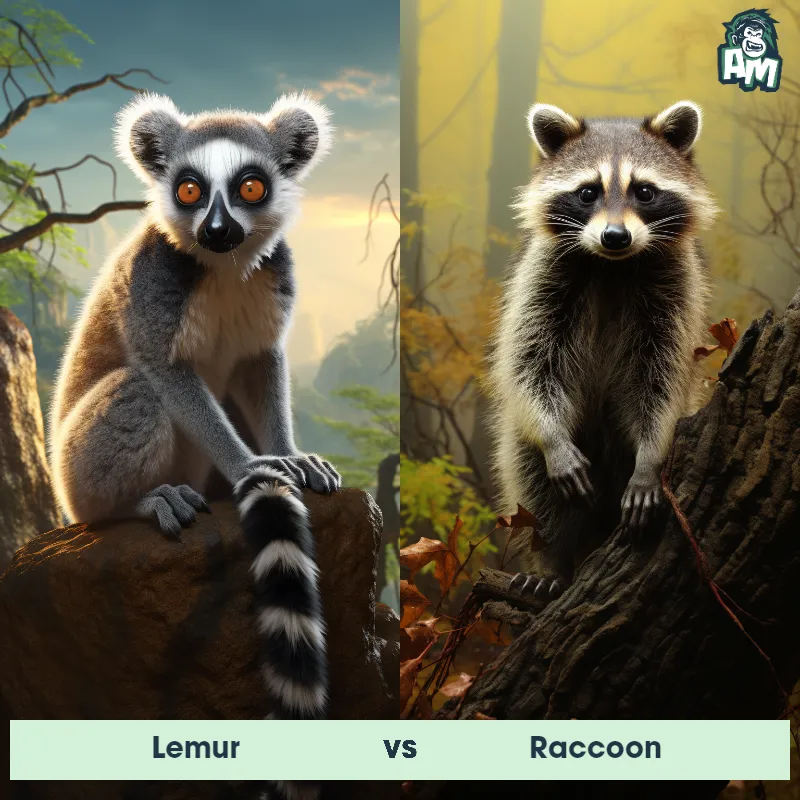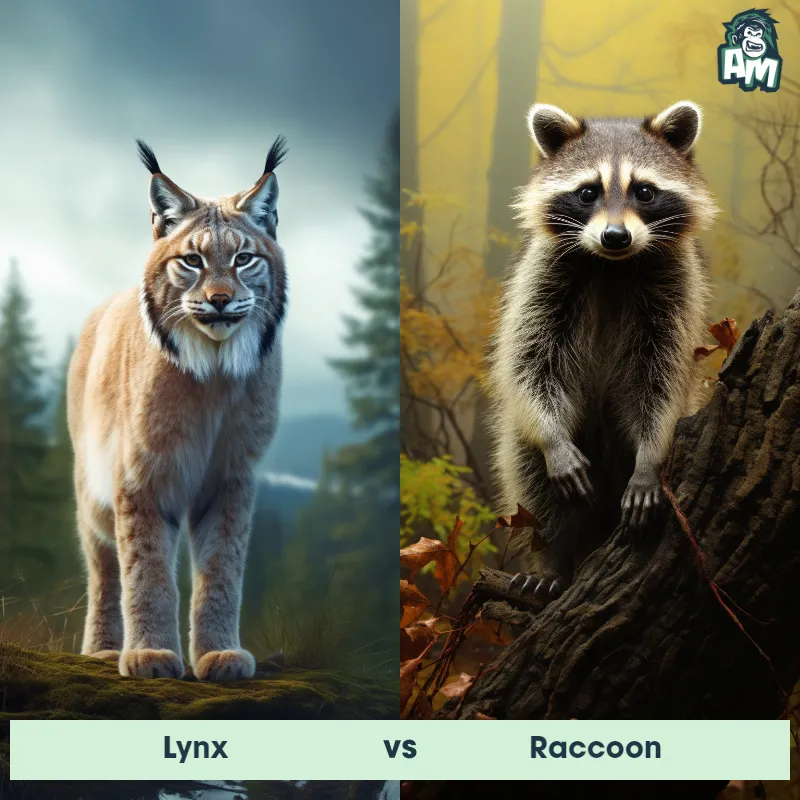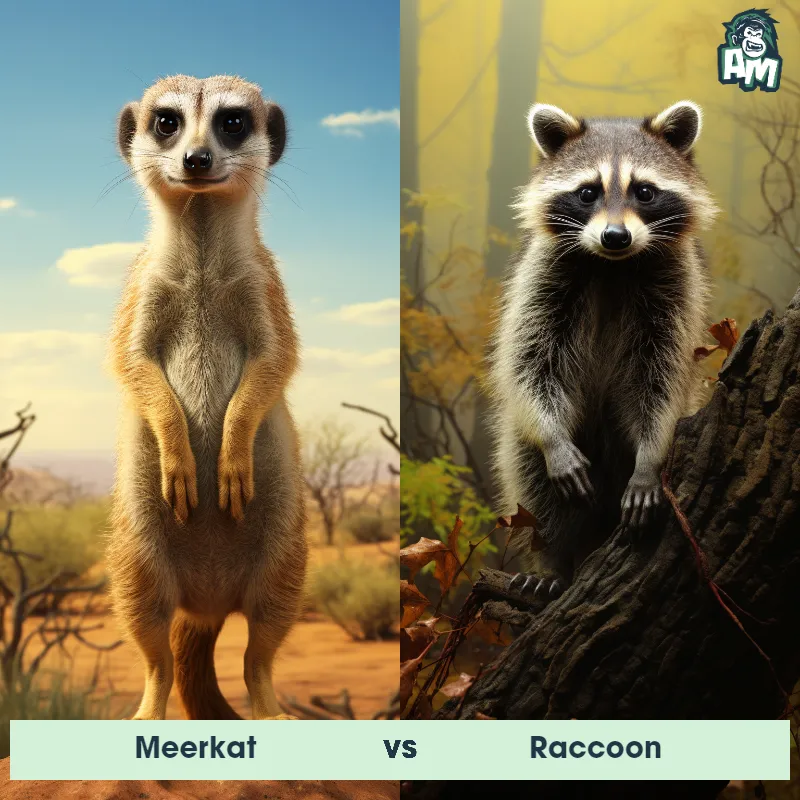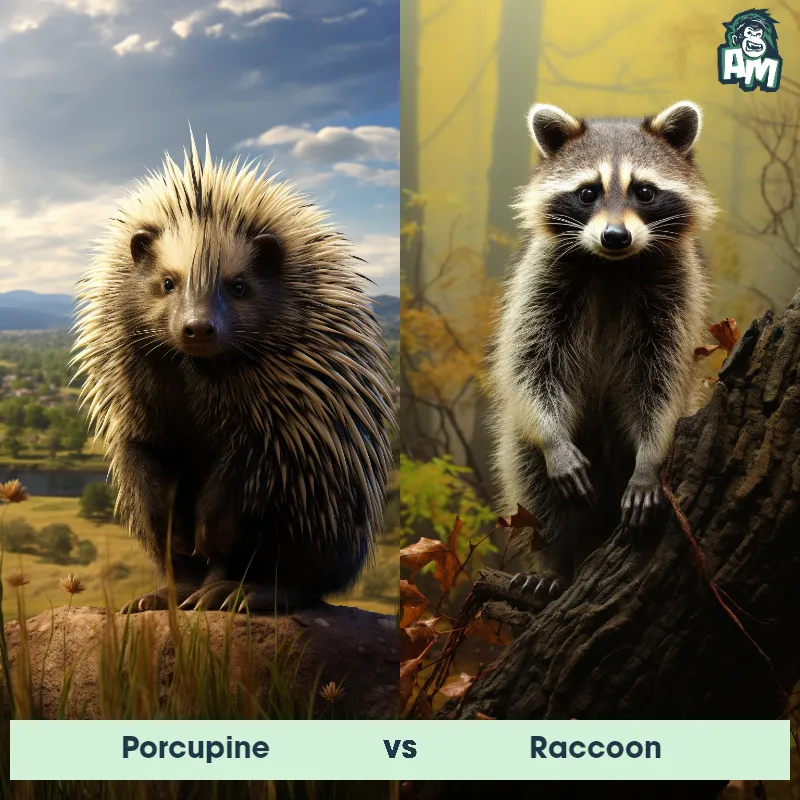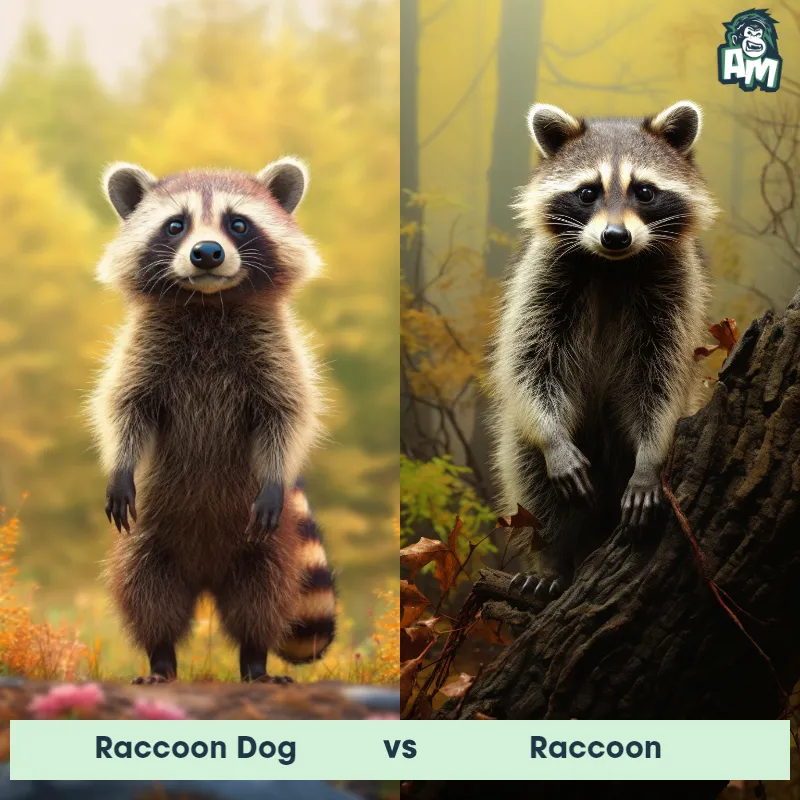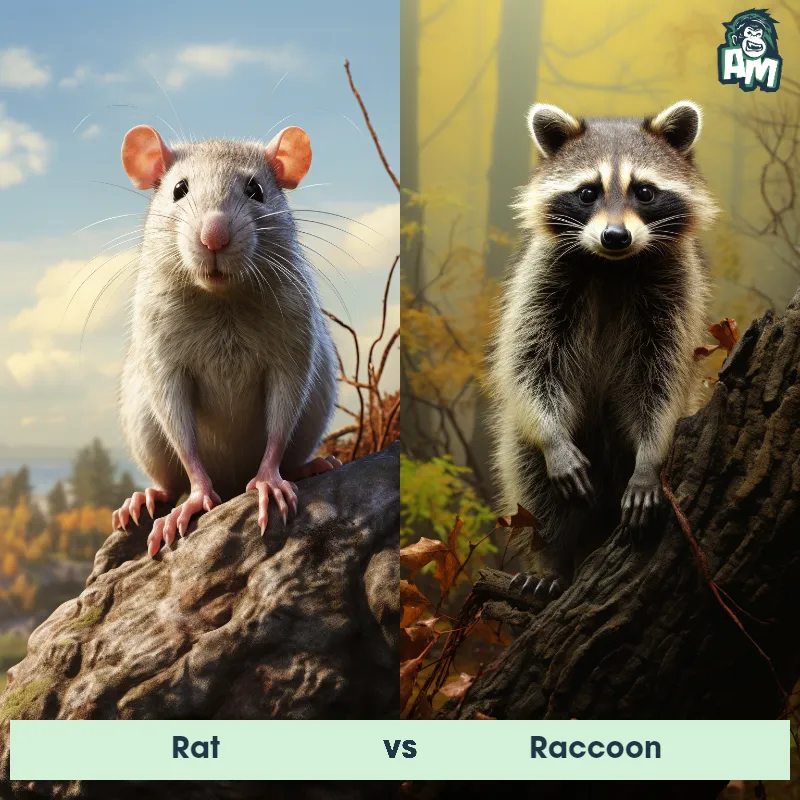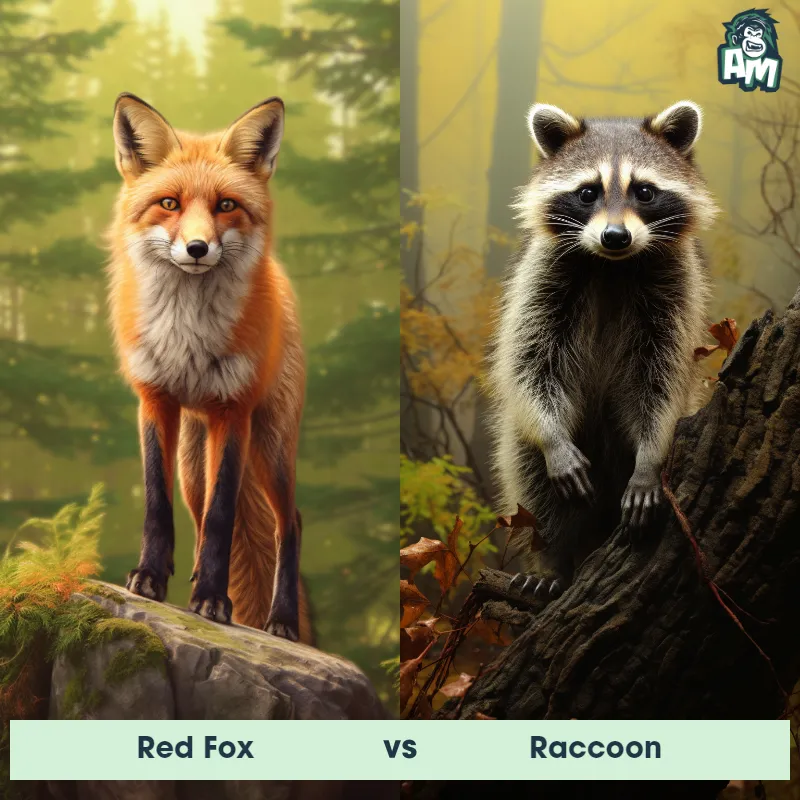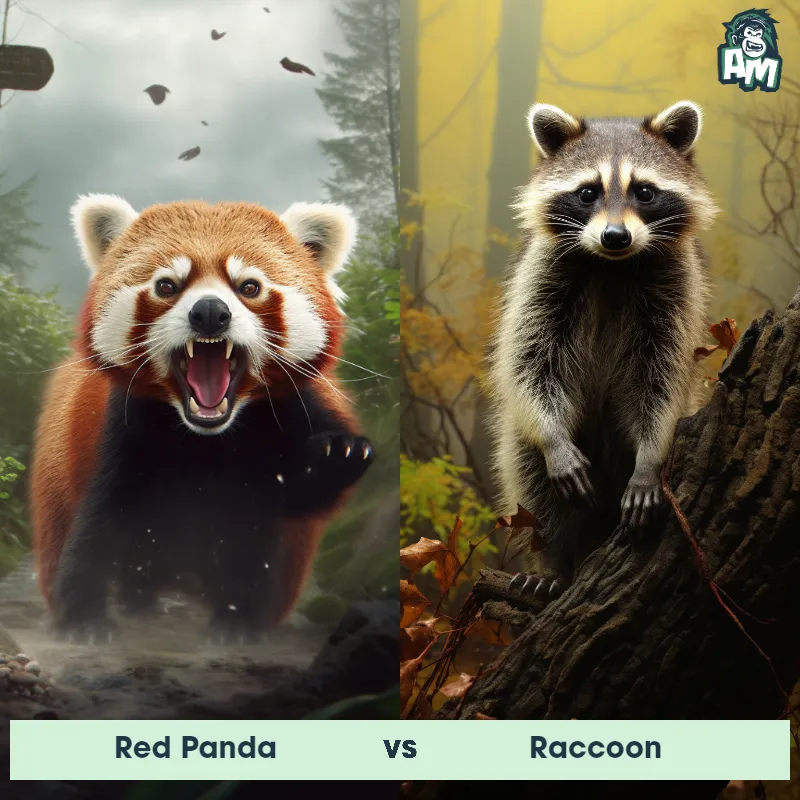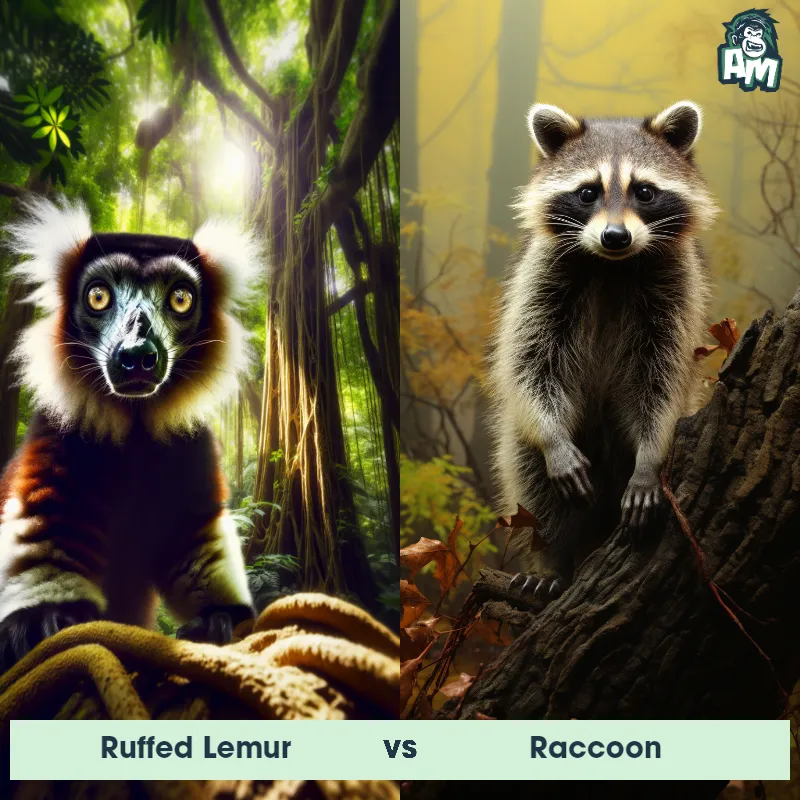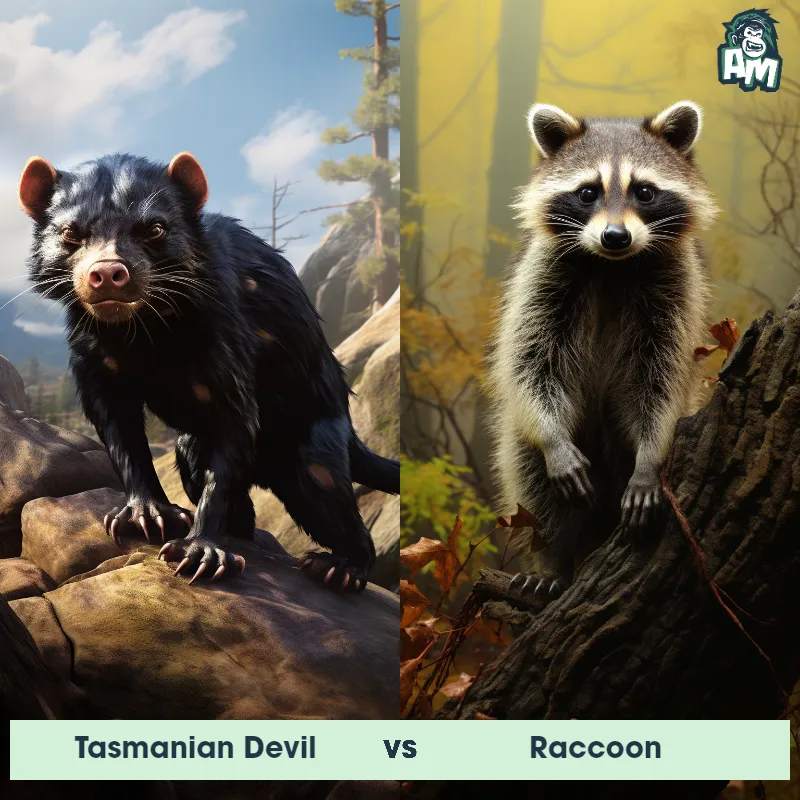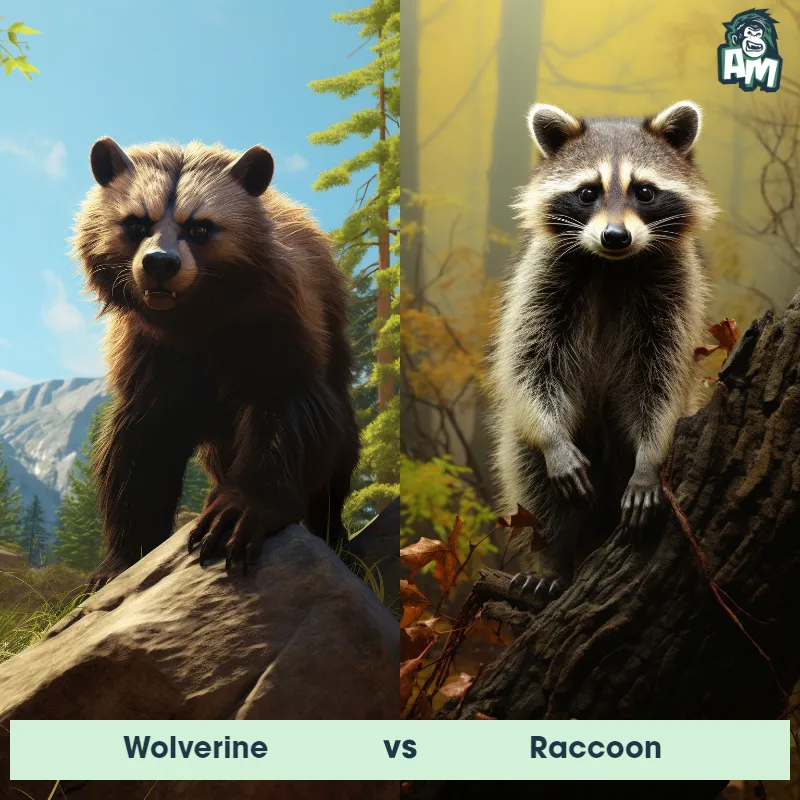The Raccoon
The raccoon, scientifically known as Procyon lotor, is a medium-sized mammal native to North America. These intelligent creatures have a distinct appearance, with a pointed snout, round ears, a thick bushy tail with alternating black and grey rings, and a tactile "mask" of black fur around their eyes. They are primarily nocturnal, using their dexterous front paws to manipulate objects and search for food. Known for their adaptability, raccoons are found in a variety of habitats such as forests, urban areas, and wetlands, showcasing their resourcefulness in survival.
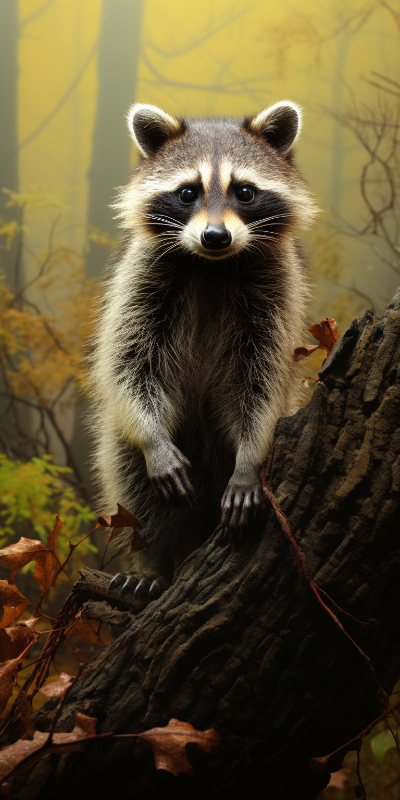
| Raccoon | |
|---|---|
| Size | 2 to 3 feet long (60 to 90 centimeters) |
| Weight | 10 to 20 pounds (4.5 to 9 kilograms) |
| Speed | 15mph (24km/h) |
| Key Strength | Dexterity and intelligence |
| Biggest Weakness | Lack of size and strength compared to larger predators |
| Scientific Name | Procyon lotor |
| Family | Procyonidae |
| Habitat | Forests, mountainous areas, coastal marshes, and urban areas |
| Geography | North America |
| Diet | Omnivorous, eating berries, insects, eggs, and small animals, as well as trash and pet food in urban areas |
| Lifespan | 1.5 years - 3 years |

The Raccoon
The raccoon, scientifically known as Procyon lotor, is a medium-sized mammal native to North America. These intelligent creatures have a distinct appearance, with a pointed snout, round ears, a thick bushy tail with alternating black and grey rings, and a tactile "mask" of black fur around their eyes. They are primarily nocturnal, using their dexterous front paws to manipulate objects and search for food. Known for their adaptability, raccoons are found in a variety of habitats such as forests, urban areas, and wetlands, showcasing their resourcefulness in survival.
Fun Fact: Raccoons are highly adaptable and have a remarkably diverse diet, which can range from fruits and nuts to fish, insects, and even small mammals, making them omnivores with an exceptionally broad palate.
| Raccoon | |
|---|---|
| Size | 2 to 3 feet long (60 to 90 centimeters) |
| Weight | 10 to 20 pounds (4.5 to 9 kilograms) |
| Speed | 15mph (24km/h) |
| Key Strength | Dexterity and intelligence |
| Biggest Weakness | Lack of size and strength compared to larger predators |
| Scientific Name | Procyon lotor |
| Family | Procyonidae |
| Habitat | Forests, mountainous areas, coastal marshes, and urban areas |
| Geography | North America |
| Diet | Omnivorous, eating berries, insects, eggs, and small animals, as well as trash and pet food in urban areas |
| Lifespan | 1.5 years - 3 years |
Raccoon Matchups
We use AI to simulate matchups between the Raccoon and other animals. Our simulation considers size, strength, and natural predatory behaviors to determine the most likely outcome.
Raccoon: Diet, Predators, Aggression, and Defensive Behaviors
What do Raccoons eat?
Raccoons are omnivorous animals with a varied diet. They primarily eat fruits, nuts, insects, small mammals, birds, eggs, and even carrion. They are opportunistic feeders and will also consume human food scraps and garbage if easily accessible.
Do Raccoons have any predators?
Yes, Raccoons have several predators in the wild. Some of their main predators include bobcats, mountain lions, coyotes, and large birds of prey such as owls and eagles. However, their biggest threat comes from humans who hunt them for their fur or as nuisance animals.
Are Raccoons aggressive?
Raccoons are not known to be naturally aggressive towards humans. However, they can become aggressive if they feel threatened, cornered, or provoked. It is important to keep a safe distance from wild Raccoons to avoid potential conflicts.
Do Raccoons fight?
Raccoons are solitary animals and usually avoid confrontation with other animals. However, during the breeding season or when defending their territory or young, Raccoons may engage in fights with each other or with other animals. These fights can be fierce but are usually brief.
How do Raccoons defend themselves?
When faced with a threat, Raccoons have several defense mechanisms they can employ. They may hiss, growl, or puff themselves up to appear larger and more intimidating. If necessary, they can also use their sharp claws and teeth to defend themselves or escape from predators.
What is the biggest weakness of Raccoons in a fight?
Despite their agility and sharp claws, Raccoons have a relatively small and lightweight build compared to some of their predators. This physical disadvantage can make them vulnerable in a fight against larger and stronger animals. Additionally, their primary defense mechanism is to flee rather than engage in a prolonged physical altercation.
Fun Fact: Raccoons are known for their mischievous nature and their ability to open simple latches and locks using their nimble paws, so securing garbage cans or containers around them can be a challenge.
Fun Fact: Raccoons have developed a unique adaptation to their front paws, which enables them to be highly successful when foraging for food. This adaptation, called a "locking mechanism," allows raccoons to rotate their front paws nearly 180 degrees, enhancing their ability to grasp and manipulate objects with precision.



